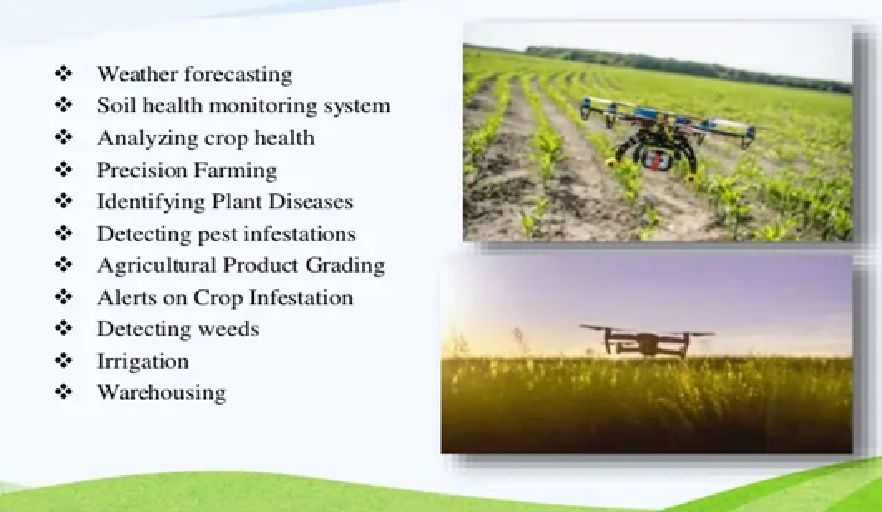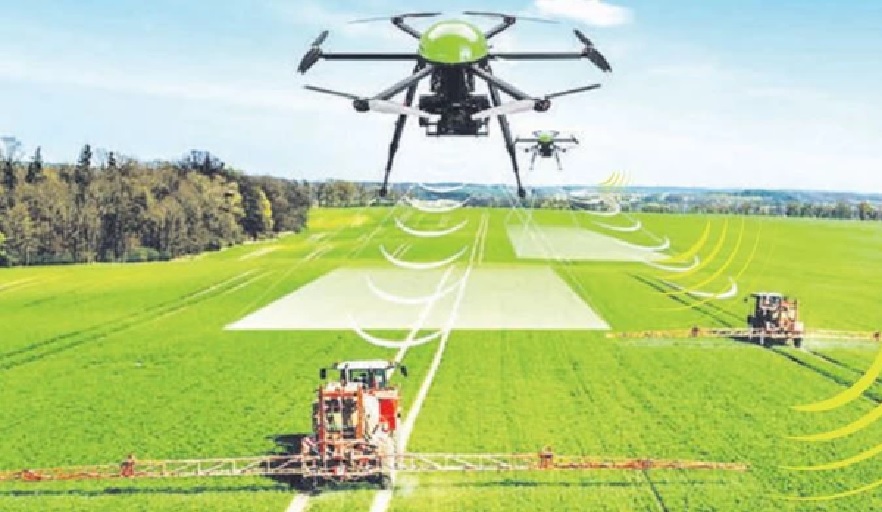The Application of AI in Agriculture
Enter agritech startups, who are approaching these issues with innovation and the use of technology such as artificial intelligence (AI). [1] AI application in their solutions provides a range of improvisation options from farmland labor to fintech, to data analytics, amongst others. The application of AI in agriculture is shown in figure 1.

Figure 1: The Application of AI in Agriculture
Although the role of these agritech startups is still small in the grander scheme of things, the Indian agritech market is still very promising. According to an analysis by Inc42, by 2025, the market is expected to reach US$ 24 billion, although currently, only one percent (US$ 204 million) has been tapped.
With an increasing global population and resource scarcity come challenges for sustainable food production. Technological developments, especially artificial intelligence (AI), [2] can help make the entire food production process more efficient and improve the sustainability of agricultural techniques.
The chain of events that unfolds in between planting a crop to putting food on the table is quite complicated: planting the right crop in the right soil, protecting it from pests, harvesting it at the right time, and transporting the harvest to the consumer take a huge amount of experience and coordination. AI can help to streamline this process at many points along the chain.
There are various applications of AI in agriculture which aims at providing a drastic positive impact on India’s primary sector. [3] Some of these applications are listed below:
- AI-enabled system to detect pests and weeds
- Agricultural Robotics
- Predictive Analytics and Precision Farming
- Analysing the health of crops by drones
- Crop and Soil health monitoring system
- Use in weather forecasting to detect unpredictable weather conditions
Here is non-exhaustive list of some applications of artificial intelligence [4] in upstream agriculture:
- Smart sprayers: Why would you spray herbicides on both plants and weeds if you could target just the weed? Computer vision could help reduce the cost of herbicide consumption while avoiding plant products’ contamination with chemicals if it is not needed.
- Yield Prediction: AI brings predictability to Ag space on a scale and precision that is not achievable otherwise. This could help farmers to take proactive rather reactive measures in their practices.
- Smart Greenhouses: Smart Greenhouse Market is projected to reach USD 2.1 Billion by 2025 from USD 1.4 billion in 2020. The controlled and semi-controlled environment in greenhouses makes grower to use sensors and collect data more extensively than farmers. Data collected from various sensors and actuators, if integrated while streaming, brings new opportunity through AI algorithms to provide insights for growers.
- Integrated pest management using computer vision: Lack of enough experienced scouting personnel is a challenge for grower these days more than ever. What if a computer program connected to fixed or moving cameras doing that for growers? This means real time vision of a greenhouse (or a farm) even when nobody is there to evaluate plants one by one.
- Plant Disease Prediction: The occurance of diseases can be predicted based on historical data and the upcoming weather situation. It will save a lot of money for farmers and help them to apply pesticides more effectively.
References:
- https://techwireasia.com/2021/09/ai-applications-will-shape-the-future-of-indias-agriculture-industry/
- https://sciencemediahub.eu/2021/09/29/ai-in-agriculture-benefits-and-challenges-ahead/
- https://www.dqindia.com/role-ai-transforming-indias-agriculture/
- https://graindatasolutions.com/data-science-artificial-intelligence-applications-agricultural-practices-opportunities-challenges/
Cite this article:
Vinotha D (2021) The Artificial Intelligence (AI) in Agriculture, AnaTechmaz, pp 4





